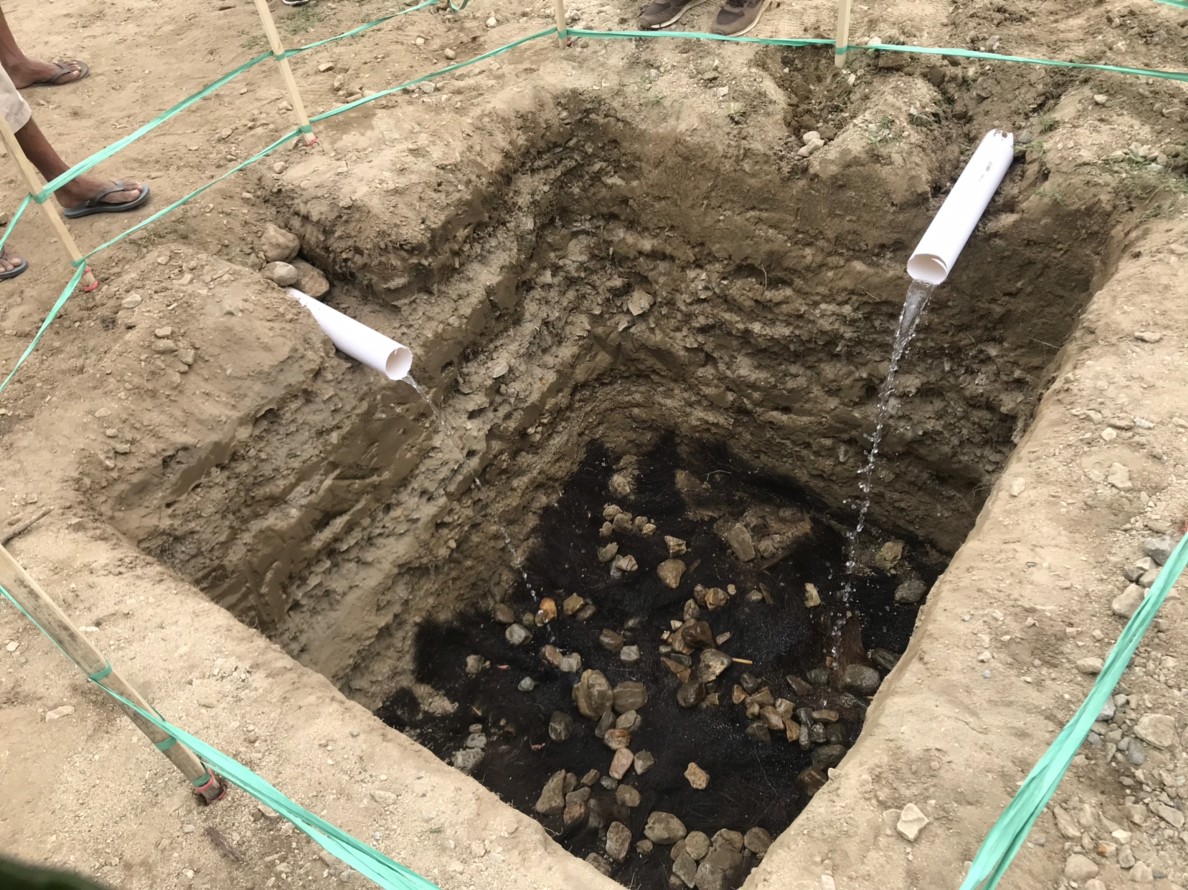LPPM-ITB and PMI Build Greywater Infiltration Basins
By Adi Permana
Editor Adi Permana

PALU, itb.ac.id – Institute for Research and Community Services of Institut Teknologi Bandung (LPPM-ITB) join hands with Indonesian Red Cross (PMI) to build greywater infiltration basins in Palu on 22-30 December 2018. The basins were built in two locations, namely Petobo and Layana emergency shelters.
In order to tackle sanitary problem such as stagnant wastewater that comes from sinks, baths and showers--usually called greywater—Team of LPPM-ITB and PMI built infiltration basins to contain greywater from public sanitary facilities that will infiltrate soil.
Each greywater basin can accommodate water from three units of sanitary facilities, which comprise 5 bathrooms each. The basin has a size of 4,096 meter3, with details of length, width, height of 1.6 meter each. On the base of the basin, thatches and rocks are prepared as organic materials that will help with filtering process before the water infiltrates the soil. The basin is then closed with a lid.
Besides building infiltration basin, the team also continued consolidation to PMI’s Camp Wash in Kawatuna. Then, the team—which comprise students from Environmental Infrastructure Engineering and Geodesy and Geomatics Engineering of ITB—also checked the water quality in liquefaction area in Palu. They began the check with taking water sample in the area. Wika Maulany, as academic assistant, became the leader of the project.
Aulia Ulfatunnisa who led the project’s water team said that the samples were taken for analyzing the quality of water in downstream disaster area. The earthquake and liquefaction may damage the septic tank and hence pollute the soil water. “This could be dangerous for downstream residences that use ground water. Therefore, water in the areas should be tested to find e-coli bacteria and organic compound in the water,” she said.
Samples were taken from liquefaction areas such as Balaroa, Jono Oge, and Petobo. These areas were selected because they have bigger probability of septic tank damage and pollution potential from decaying body of victims. “We also take samples in areas that badly hit by earthquake such as Biromaru, Taya, and Labuan,” Added Aulia.
After taking water sample, bacteriology test was conducted with the help from public health facility for analysis using saturation kit. Water Team will also send the sample to get it tested organic test in ITB permanganometry
*Reported by Moch Akbar Selamat from Palu

.jpg)
.png)
.jpg)
.jpg)
.jpg)
